The grassless patch of land, about half the size of a football field, had been cleared so hastily that pools of muddy water still filled the ruts made by the earthmovers’ tires. The road leading to the parcel had yet to be paved, and the cars in the funeral procession that was now arriving kicked up clods of dirt as they approached. Set as it was in the otherwise lush acreage of Mount Hope Cemetery, bordering the South Side neighborhood of Morgan Park, the barren expanse more closely resembled a makeshift parking lot than a burial ground.
Standing on one of the sheets of plywood put down to protect visitors from the mud, Mount Hope’s general manager, Perry Walker, watched the group of mourners, some clutching flowers, exit their cars and trudge up a slope to one of two rectangles cut into the earth. The first plot was for the family now gathering. The second, about a dozen yards away, was reserved for a burial that would follow immediately. A group of cars for that burial had already lined up. By the end of the day, four more groups of mourners would lay a loved one to rest here.
This constituted a slow day at Mount Hope, which has recently been averaging around 60 burials a week as the city endures another COVID-19 surge. Walker told me that having 15 or 20 interments in a single day is not uncommon. Hence the rushed and muddy expansion.
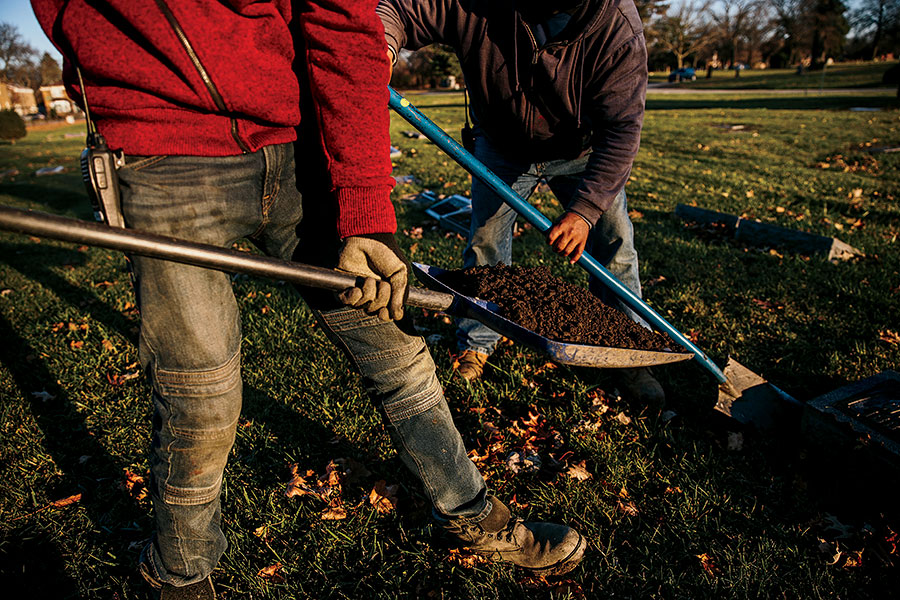
The increase in demand, Walker said, has required his beleaguered and emotionally exhausted staff to operate with the precision of air traffic controllers while still consoling families who have in some cases lost multiple members to COVID-19 — a stark reminder of the disproportionate toll the pandemic has taken on African Americans, who make up 90 percent of Mount Hope’s customers. Amid all this, the employees have had to grapple with the risk of catching the coronavirus themselves. As he took me on a drive around the bucolic grounds of the 150-acre cemetery, talking to me by phone from his car while I followed in my own, Walker — a Louisiana native in his 50s who is also a pastor — mentioned that he’d just recovered from the virus.
As if this weren’t enough, the cemetery is fighting a second battle on an entirely different front. In early October, Matt O’Shea, the alderman for the ward encompassing the residential areas next to the cemetery, including the majority white neighborhoods of Mount Greenwood and Beverly, proposed that the City of Chicago annex Mount Hope. The unusual move, which the Sun-Times described as “the legislative equivalent of the nuclear option,” would give the Chicago Police Department full jurisdiction over the area the cemetery occupies — an unincorporated part of Cook County now overseen by a hodgepodge of departments, including the Cook County sheriff and suburban police forces. “I’m reaching for anything to get control of the utter lawlessness that regularly occurs at the front door to that cemetery,” O’Shea told the newspaper.
The alderman was referring to a series of incidents, stretching back for roughly a decade, arising from traffic jams created by funeral processions entering and leaving the cemetery. O’Shea has cited fights, gunplay, and people driving recklessly along quiet residential streets.
The most recent incident occurred at the cemetery’s main entrance, on 115th Street, in September. One man was shot, and two others, including a child, were injured by broken glass during an argument that erupted between members of two funeral processions that had gotten ensnarled near the cemetery’s gate. Police described the crime as a road rage incident, and not gang related, but in the Sun-Times, O’Shea characterized the violence and disruptions generally as “rival gangs settling their disputes in a funeral procession.” He added, “My community’s been under siege.”
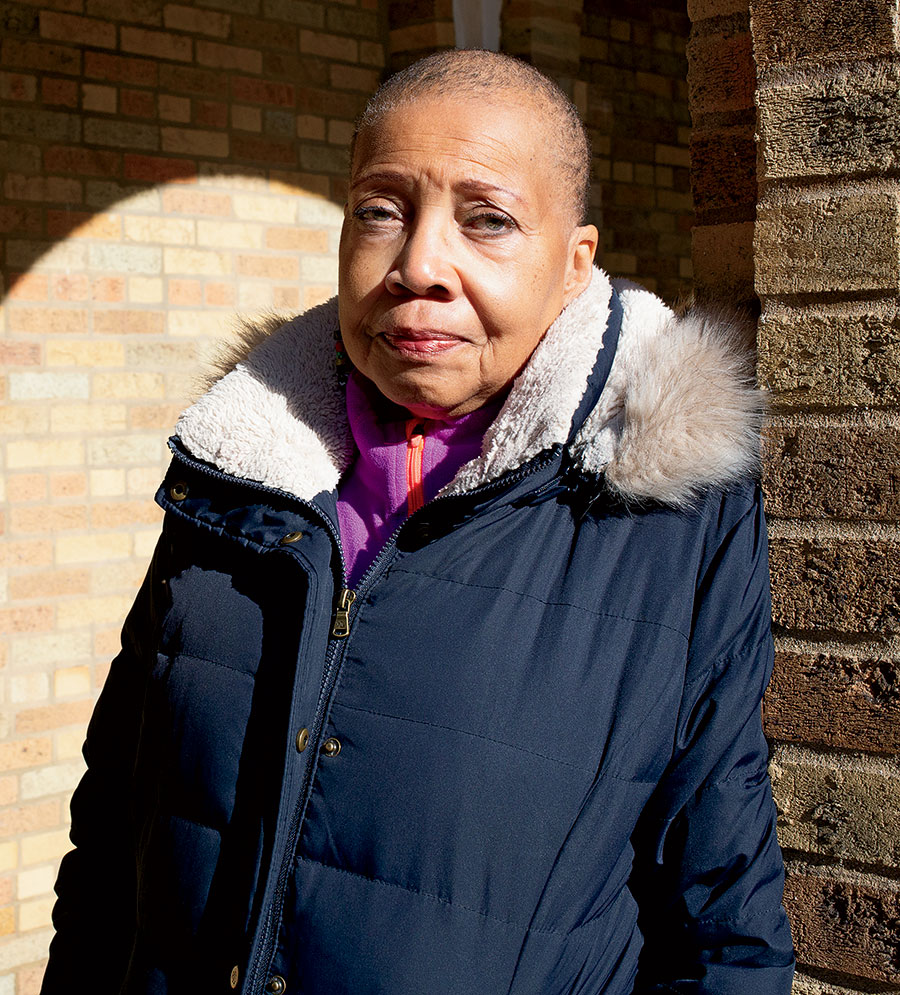
Mount Hope occupies the middle of an elongated J of memorial parks and golf courses extending across the Far Southwest Side. Nearly 50,000 bodies are interred there, some dating back to the Civil War, many belonging to families with multiple generations buried alongside each other.
Mount Hope is not just a busy cemetery, it’s an affordable one. During our visit, Walker pointed out a large mausoleum nestled in a grove of elms. Since he arrived seven years ago, the cemetery has built several such structures, which can accommodate multiple coffins, to provide a low-cost alternative to traditional graves. “It gives families a lot more options regardless of their financial status,” he said. “We have been able to help a lot of families who would not otherwise be able to afford a burial plot. There’s no place in Chicago where you can purchase a plot or mausoleum space for what you can here.”
A quick search seems to bear this out: Nationally, the median cost of a traditional funeral with in-ground burial is $7,640; comparable services at Mount Hope start at $2,495. The cemetery’s reputation for bargain burials has drawn attention at times. In 2013, in an article about the city cracking down on disruptive funeral processions, DNAinfo reported that the cemetery’s previous owner, Robert Troost, had favored a “low-cost, high-volume” business model, and that when his son Scott took over after his father’s death in 2010, the cemetery was the busiest in Illinois. Scott Troost — whose family’s Darien-based company, Troost Cemeteries, also operates seven suburban properties — had this to say about the low pricing: “If you look at cemeteries that are owned by large, publicly traded companies their philosophy is very different. … Also, we had negotiated some favorable agreements with vendors that have managed some of our costs.”
For his part, Walker stresses that he cannot turn away customers just because the deceased or the survivors might have gang ties, and it’s not something he ever asks about or could even verify if he wanted to. “We would never do that,” he says, adding that all customers receive the same level of attention and care. He is quick to point out that the cemetery offers more than just a place to come visit a grave or attend a burial. When he noticed that families liked to linger and socialize around the gravesites of loved ones on Memorial Day, he and his staff, which includes eight family counselors in addition to a handful of office workers and groundskeepers, started the tradition of grilling hot dogs and serving drinks and ice pops to visitors at no charge on that holiday. “They can sit there and play music and talk to their loved ones,” he says.
Spencer Leak Jr., the vice president of Leak & Sons Funeral Home in Chatham, which regularly does business with Mount Hope, says Walker and his colleagues are right to extend the same level of service, and the same discretion, to all clients. Leak explains: “We do have families from time to time say, ‘Mr. Leak, I just want to tell you straight. My son had some problems and we want you to know that so that we can have security there.’ But you are not going to say to the family, ‘You know, I have a feeling about you, so we’re going to need police.’ You can’t do that.” Not only would that be cruel to a grieving family, he says, but “you would be sued.”
Walker does not deny that loud, sometimes violent behavior has marred burials over the years, but he resents the reductive characterization of Mount Hope as a “gang cemetery.” At the very least, that sobriquet causes grief to those who have buried relatives here, he says. “When you are talking about a family who has memorialized one of their loved ones in these mausoleums, and someone makes that kind of comment, it is definitely hurtful. … This cemetery has tremendous history.” When he heard about the annexation bid, he says, “all I could reflect on is the many, many families that we meet with who are hard-working folks who are having a label put on a place that they have entrusted to bury their loved ones forever.”
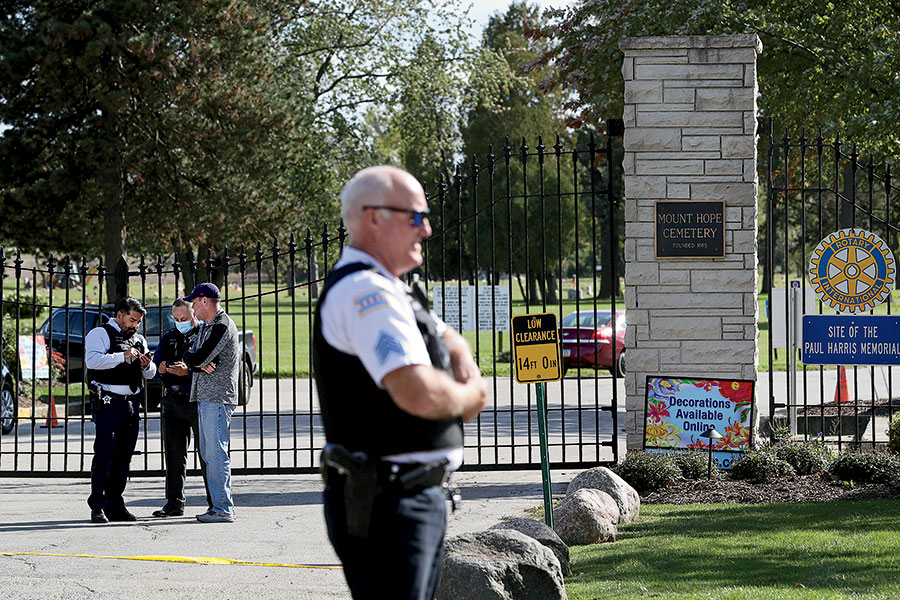
The longtime Sun-Times columnist Mary Mitchell, who has a sister, a niece, and an aunt buried at Mount Hope and has written about her staunch opposition to O’Shea’s annexation proposal, agrees. “How would I not be offended by this cemetery continually being framed as some type of gang cemetery?” she says. “It is not a gang cemetery. My disappointment [with the alderman’s response] is that he did not have to use a road rage incident that could have happened to anybody at any corner, any place in the city [to push for something as drastic as annexation].”
Walker also believes that O’Shea used the September shooting as a pretext for casting a shadow across the cemetery in order to prompt a wider crackdown. “If there has been a big problem [in the past several years], then I am surprised because no one has contacted me. I believe the reason they haven’t is that it is controlled. It is a safe environment.” After the September incident, however, “all of a sudden it’s like, ‘This has been going on.’ Well, no.”
In an email, Mount Hope’s Troost said he felt similarly blindsided by O’Shea’s annexation proposal. “From my understanding of the law, in this case it’s not possible for a city to simply annex property without consent, so I have to wonder about what the motivation is for making those claims,” he wrote. “There may be benefits to us in having access to city services, but when that idea is paired with contentious language it’s clear that this is not being offered in a spirit of cooperation.”
Mitchell points out that violent outbreaks at funerals and burials are a citywide problem. “If people are violating the law,” says Mitchell, “if they’re hanging out of a car with guns blazing or throwing up gang signs or being a disturbance in the neighborhood, that is a policing problem, not a Mount Hope problem.”
She suggests that in a deeply segregated city like Chicago, the current conflict over annexation fits a pattern. “There is a long history of discrimination after death,” she says, characterizing the frustrations of Mount Hope families in the following way: “Not only do you have a problem with your family coming and trying to find a place to put your [loved ones] to rest, but then there’s the whole knowledge that nobody wanted you there. … Mount Hope has always been seen as an invasion by people who live in [the neighboring] community.” In other words, she says, “if you are talking about annexing a cemetery and you have already contributed to its stigmatization by describing it as being gang related, that’s just code for ‘Black folks buried there and they getting on our nerves.’ ”
That the cemetery is bounded by Beverly and Mount Greenwood is not lost on Mitchell and other observers. Mount Greenwood in particular has been the site of a number of racially charged incidents, at least one of them directly tied to Mount Hope. In 2016, a white off-duty police officer fatally shot a 25-year-old Black man from Indianapolis who was part of a motorcade that had just left the cemetery and was blocking a fire lane on the main drag of the neighborhood, which is home to many cops and firefighters. When Black Lives Matter organized a protest march in Mount Greenwood after the shooting, white residents jeered the demonstrators, some shouting racial slurs.
O’Shea, who is white, has vehemently denied that his efforts have anything to do with race, emphasizing that the complaints he’s received about Mount Hope have come from both white and Black constituents. But for some, the optics — white residents being inconvenienced by Black deaths, in the midst of a pandemic no less — are too stark to ignore.
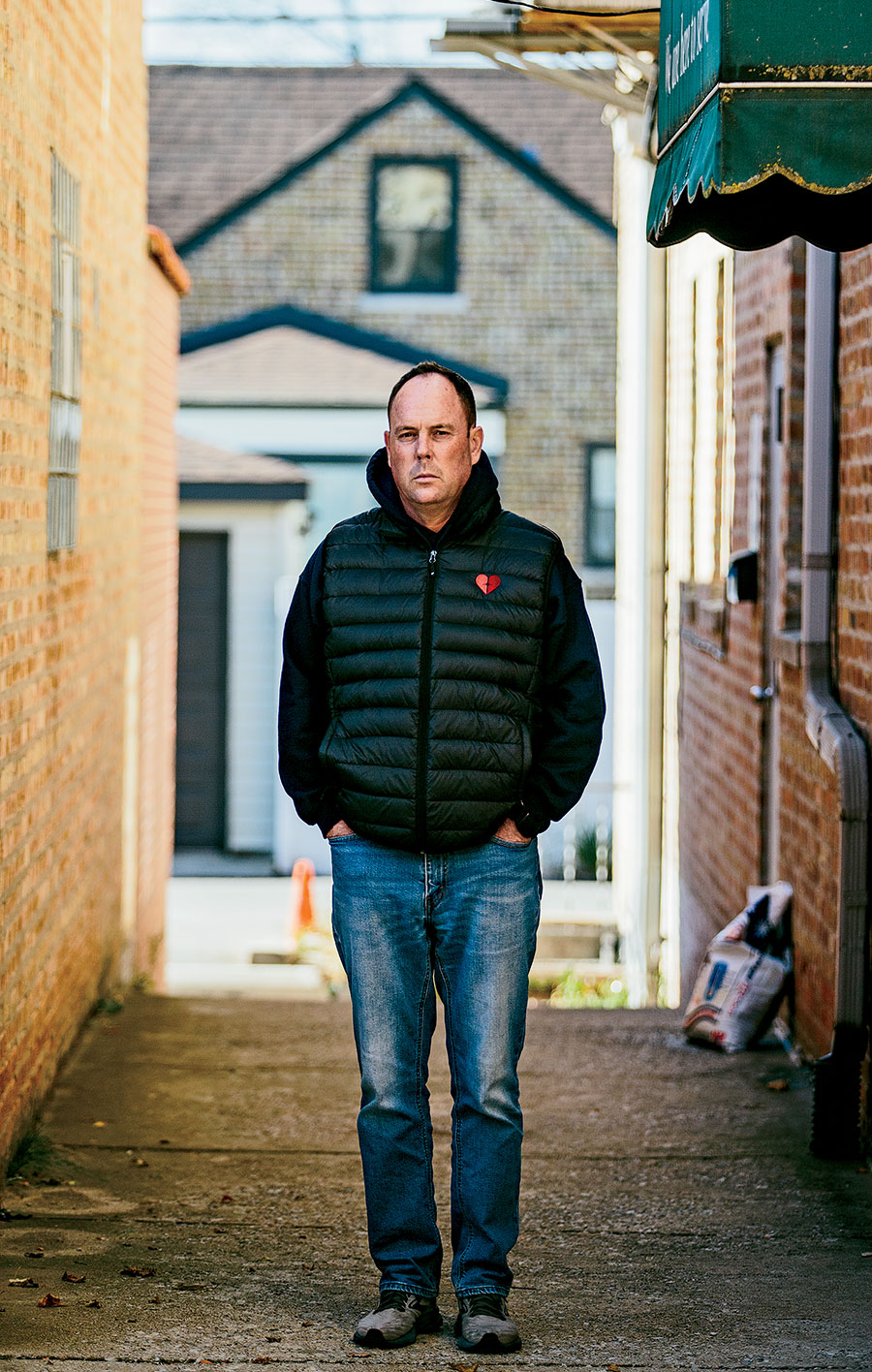
In early November, O’Shea sent me links to two YouTube videos that he said captured some of the disturbances he’s been trying to call attention to. The first, time-stamped September 20, 2011, appears to be from a security camera and shows dozens of cars, hazards flashing, lining up outside Mount Hope’s main entrance. Some cars pull out of line and race past oncoming vehicles before careening around a corner and through the gate. Passengers lean out the windows of a few of the vehicles while groups of pedestrians weave between cars. The second video, undated, was taken with a smartphone by the passenger of a car that was presumably part of a procession en route to the cemetery. The video shows vehicles occasionally swerving out of their lanes amid lots of shouting and laughing and blaring music as the loose motorcade speeds along a street lined with stores and residential buildings. Both videos show plenty of bad driving but, as far as I could tell, no acts of violence or aggression.
When I spoke to O’Shea, he enumerated problems that the videos didn’t show. “During the processions, there have been incidents of cars driving into oncoming traffic, waving guns out the window, and shouting obscenities at other motorists,” he said. “There have been incidents of cars racing down residential streets, gunshots fired in the air when exiting the cemetery. There have been incidents of law enforcement curbing vehicles in a procession and finding loaded weapons.” O’Shea seems to have been referring to the August 2018 traffic stop of a private bus that had just left a burial at Mount Hope. Given consent by the driver to search the vehicle, members of CPD’s gang enforcement unit confiscated six handguns. The 22nd District police headquarters in Morgan Park tweeted a photo of the weapons under the words “Recovered from a vehicle leaving Mt Hope Cemetery following a gang funeral.”
Erik Tait has lived with his wife and four children in Morgan Park across the street from Mount Hope’s main entrance since 2004. He says he’s witnessed numerous instances like those O’Shea describes, including the shooting this past September. He was driving down Fairfield Avenue past Mount Hope with his wife, 13-year-old son, and 12-year-old daughter that afternoon when he saw an approaching procession. The line of cars suddenly stopped, he says, and one car banged into another. “I’m looking at this like, What’s going on?” Tait recalls. “Then my wife and daughter start screaming. And then I look up and people are literally shooting at each other. It really hit me later how helpless I was and how little I could do to protect my family.”
Tait, who is white, acknowledges that a lot of people in the neighborhood consider it a “Black crime gang problem,” but he says he does not look at it that way. “They deserve their resting place, but they don’t have to be violent,” he says. “Something has to be done regardless of color, race, any of that.”
O’Shea concedes that the cemetery has, over the years, tried to take steps to mitigate such problems, including hiring an off-duty sheriff’s officer to direct processions. That “greatly reduced” backups, he says, but the cemetery did not retain the officer, apparently because it couldn’t continue covering the cost.
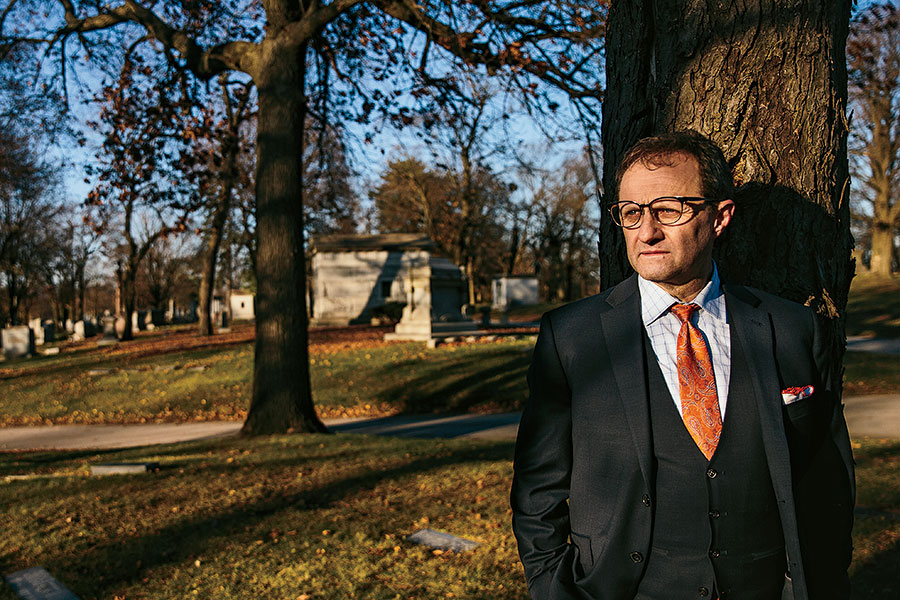
Walker wonders why the cemetery bears the blame and burden for incidents that have occurred almost exclusively outside its gates: “We are not traffic control on the roads.” On the grounds, he says, the cemetery does provide security — in the form of two off-duty police officers, onsite six afternoons a week — to guide processions and deal with any issues, and it has set out traffic cones on the approach streets. “There are times we have 15 or 20 burials, most of them between 12 and 3 o’clock, and you have hundreds of cars going in here, but we’ve had them flowing [without incident].”
A second entrance was opened in 2012 on the south side of the cemetery, on 119th Street, but visitors seldom use it, according to O’Shea, even though doing so could dramatically ease traffic jams. Walker says he and his staff have encouraged the use of the South Gate, as the entrance is called, but the city installed a traffic barrier that forces cars exiting there to turn right, presumably to prevent left-turning vehicles from darting into traffic. “Many of our families come from the city and need to turn left toward Western Avenue,” Walker says. “The directional barrier has only created more traffic problems.” In an October op-ed piece for the Sun-Times, Mitchell weighed in, writing: “What funeral director is going to tell a grieving black person the family has to enter the cemetery through the back door?”
O’Shea says he is exploring other options apart from annexation, including working with engineers from the Illinois Department of Transportation and the Cook County Department of Transportation and Highways to improve traffic flow. The bottom line, he says, is that “there clearly needs to be some regulatory framework” to deal with what he characterizes as a “dangerously run business.”
The alderman acknowledges that annexation won’t be easy. Since cemeteries are licensed by the state, his annexation proposal would require the involvement of state lawmakers; O’Shea told me he’s already had “preliminary discussions” with legislators but didn’t elaborate. And while it’s not unprecedented for municipalities in Cook County to annex an unincorporated area, doing so without the consent of property owners would almost certainly require the intervention of the courts.
As for how annexation would solve the problems at hand, O’Shea says it would empower a single entity, the Chicago Police Department, to implement an effective traffic plan. What’s more, Chicago police officers could presumably patrol the cemetery’s main entrance as processions arrive.
One step the cemetery could take to reduce traffic problems would be to spread burials out so they’re not clustered on weekends, when the worst backups occur. Walker is reluctant to do so, as it would essentially involve turning mourners away. “It is a common practice for family members to travel across the country to be at the funeral of their loved ones. Due to normal work schedules, many choose Saturdays for the burial and repast.”
The cemetery could also place limits on the number of cars allowed in a procession, an option that Mitchell sees as viable in principle but not in practice. “We in the Black community come with our own traditions,” she says. “The weeping at the gravesite, the long procession of cars. More cars signal that you’re important in the community. Nobody wants a two-car procession.”
In any case, Walker doesn’t see it as his place to discourage mourners in any way from attending a burial. “We would not deny anyone the right to a peaceful cemetery committal of their loved one on the day that they choose. As I have often said, we assist families with funerals, not weddings. Funerals are not invitation only.”
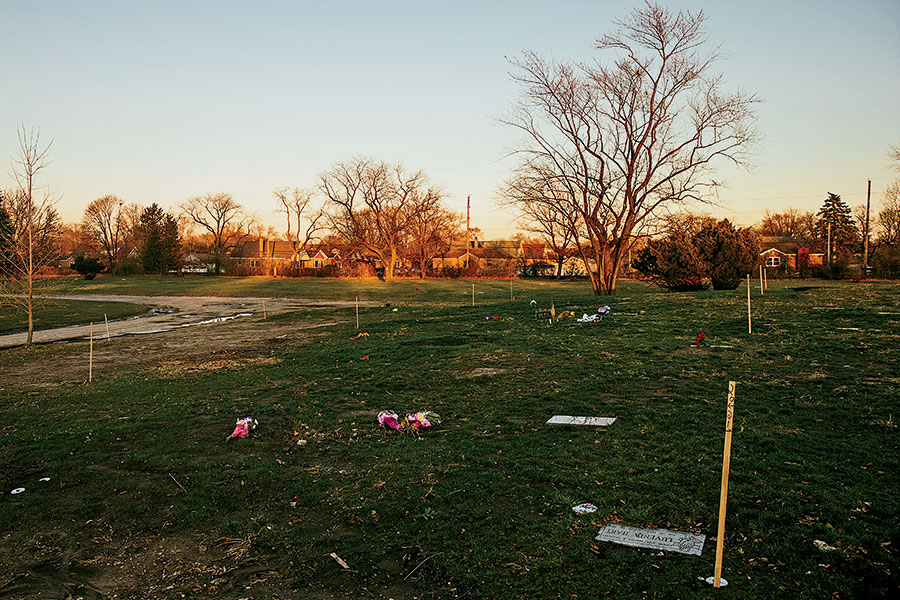
By August, the number of people interred at Mount Hope since the start of the year had already surpassed the 400 burials the cemetery performed in all of 2019. Mount Hope’s grief counselors and other employees, who operate out of a small yellow brick building at the cemetery’s entrance, have had little time to pay attention to the controversy swirling around them.
“It’s been extremely overwhelming,” says counselor Elsa Widmaier-Artis. “Some counselors who were at high risk [for COVID-19] were sent home, and some refused to come in. There was one point where I was working by myself, and people were dying. I was having to juggle two, three families at a time.”
New COVID-19 restrictions have complicated matters. Instead of sitting in the comfort of a reception area, Widmaier-Artis says, family members must now fill out paperwork on the curb outside the office. “It was raining on some days. I was out there with an umbrella and a clipboard and a facemask and hoping I wouldn’t bring COVID-19 back to my family.”
The most difficult part by far has been the daily onslaught of grief and suffering from the families whose loved ones died from the virus, she says. “I had this one family where the daughter came in and made arrangements for her mother, and about a month later, her son came in to make arrangements for her. … You have to have compassion and you can’t run out on them. So I pray. I wake up at 3 or 4 o’clock in the morning, and I pray that God gives me compassion.”
The sheer numbers, she says, risk blinding her to the humanity of the families she counsels. “The other thing I pray for is to give me a big enough memory so that I can remember these people. I have to remember that everyone who we bury has a family.”
As for the so-called gang burials, Widmaier-Artis doesn’t see them as any different from those of other families. “Nobody comes here because they want to,” she says. “But if we weren’t here, what would they be left with?”
Toward the end of my visit with Walker in October, I watched as the first group of mourners began to drift away in twos and threes after the short ceremony, arms around one another, picking their way across the packed soil, past an earthmover and the hearse.
Because of social-distancing restrictions, the cemetery was not allowing pallbearers to move coffins from hearse to grave, so Walker and I stood by as cemetery workers did the job after the mourners had cleared away.
“It’s too bad,” Walker said, referring to the fact that loved ones coming here in the next few months would have to wait till spring for the grass to grow in. “This will be a beautiful area. It’s probably one of my favorite areas because when you’re on the hillside, you can see all the way across the cemetery.”
He paused another moment, then said, “We should get going. We don’t want to get behind the processional.”
We reached our cars just ahead of the exiting line of mourners. As I pulled away, the second procession was already moving up the hill.



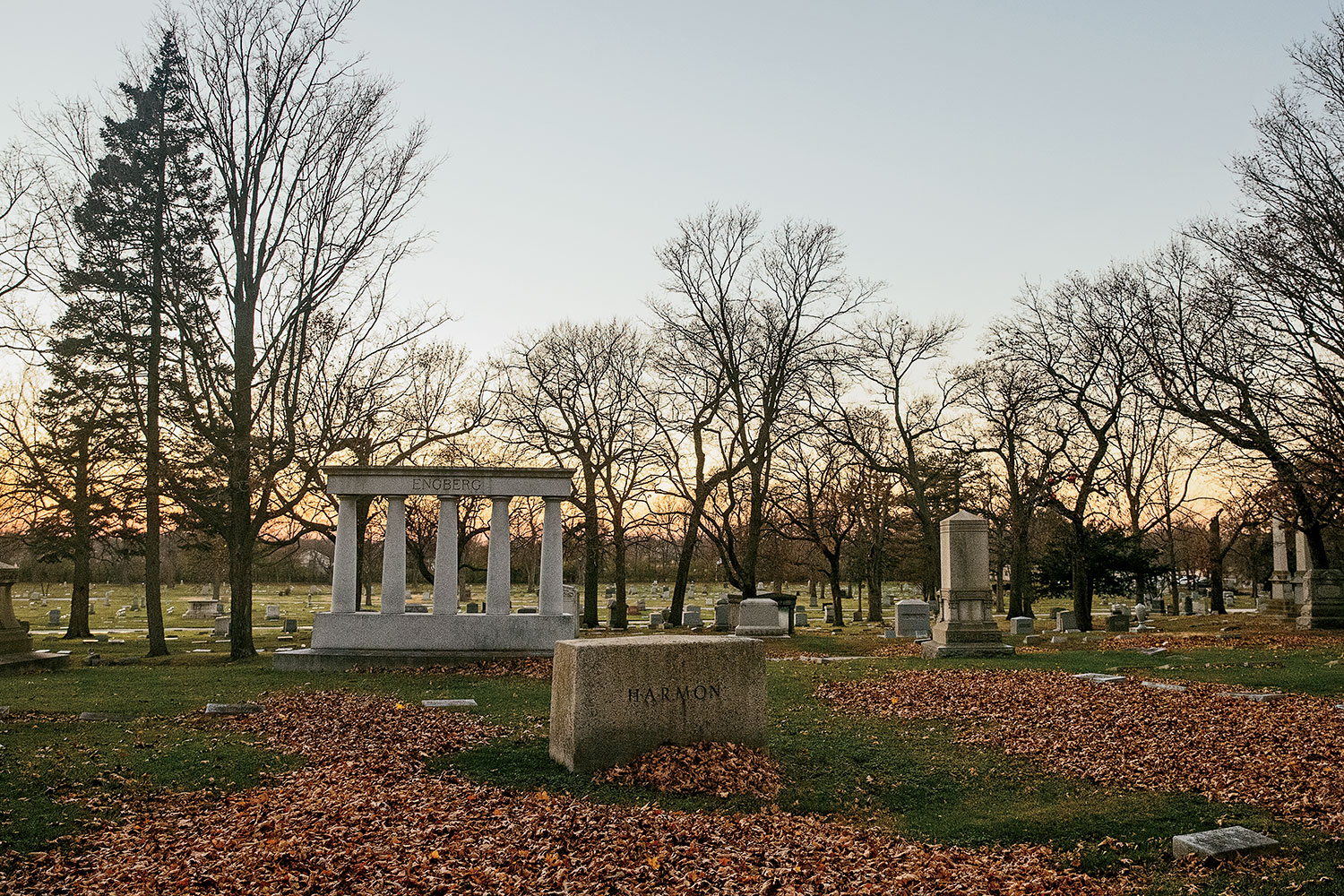
Comments are closed.